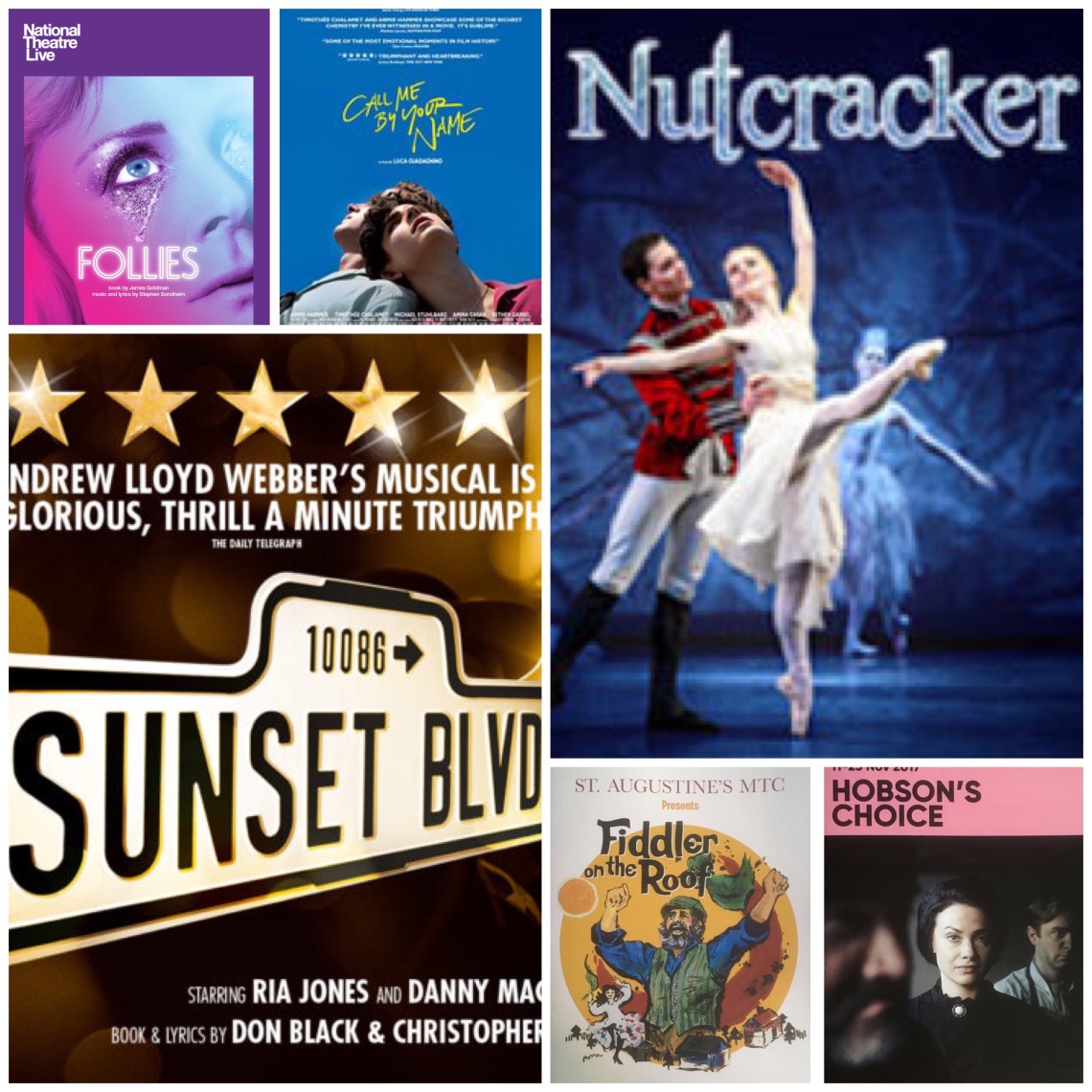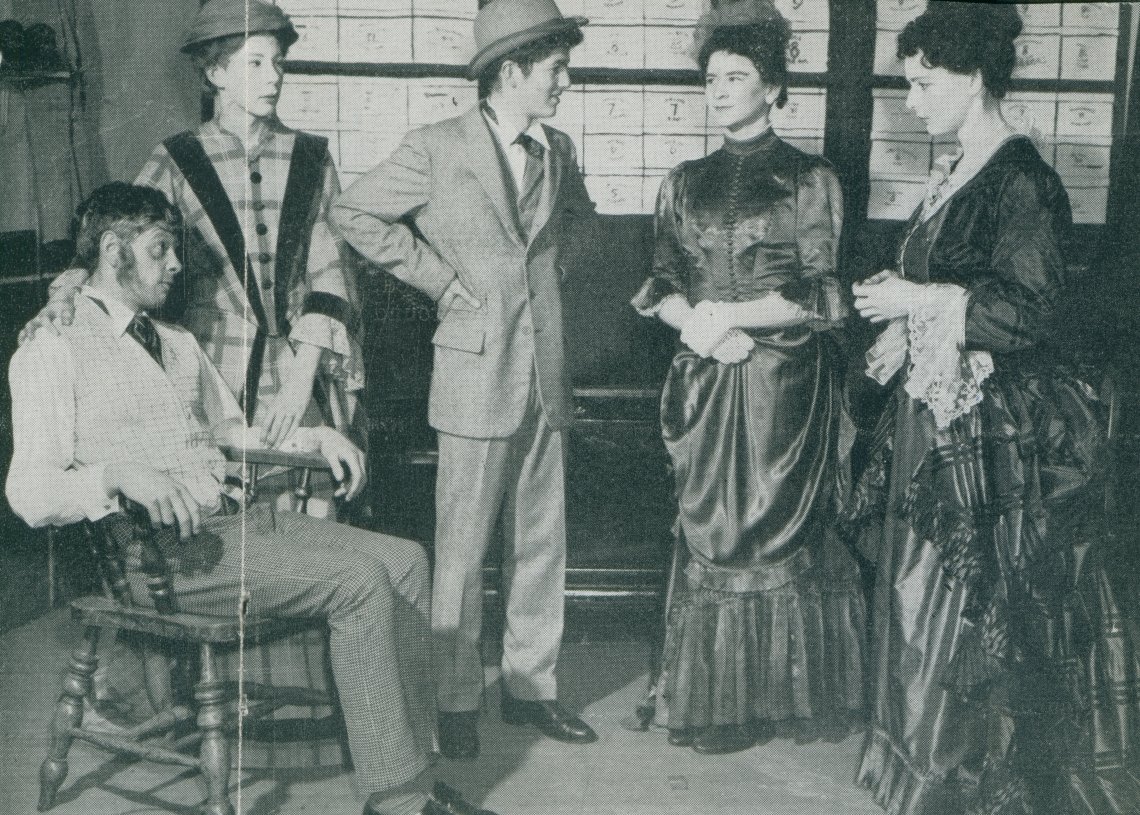
At last, the interval is over, and we are back in the theatre for Act 2! So often in the theatre, the second act is more exciting than the first, and for me, this certainly was the case with the shows that I am about to describe. These shows, mostly in the West Midlands, in Birmingham, Coventry and Solihull, were a real treat. Different in so many ways, and a real extravaganza of theatrical productions.
One of my favourite Andrew Lloyd Webber musicals opens this second act. I first saw Sunset Boulevard shortly after it opened in the West End in 1993, with Patti Lupone playing the part of Norma Desmond, the former Hollywood star of the silent screen. Since then I have seen others, including Glenn Close, play that part, but in the latest touring production that I saw in Birmingham, Ria Jones takes the lead. She was superb; not only capturing the character of the delusional fantasist that is Norma Desmond, but also filling the theatre with her wonderful soprano voice. With One Look and As If We Never Said Goodbye, were sung with such clarity; here was a leading lady who owned the stage, ably supported by Danny Mac playing the part of Joe Gillis, the young Hollywood writer, and an enthusiastic cast and orchestra. The standing ovation, not always deserved in theatres, was in my opinion, rightly accorded to this cast and this production.
From one big musical to another, and for me, a first, as I have never before seen a live theatrical production streamed to a cinema. This was Follies, the Stephen Sondheim musical currently playing at the National Theatre on London’s South Bank. Unable to get tickets for that show in London, I was able to see it streamed live to a cinema here in Coventry. Sondheim’s musicals are never the easiest, and Follies, rarely performed because it is such a big show requiring such a large cast, has nevertheless been a triumph this year at the National Theatre. Again, I saw Follies at its last West End incarnation back in 1987, and really wanted to see it again. Live streaming is such a wonderful way to do this. Admittedly, there is not the same atmosphere as there would be at a live production in the theatre, but the sound quality, the close ups, and the camera angles more than make up for that. Two and a half hours, without an interval as Sondheim directs, is quite a feat, and takes a lot of concentration, but it was worth the effort!
The cinema is not somewhere I go often, as I prefer live theatre, but having read reviews in the newspapers and heard film critics speaking of this film, I felt compelled to see it. Call Me by Your Name is already well ahead in the race for this year’s Oscar nominations, and deservedly so. I read the novel by André Aciman, on which the film is based, in the week before seeing the film. It is a coming-of-age love story between a precocious Italian teenage boy and a slightly older American man. Beautifully filmed during an Italian summer in a cultured multi-lingual household, it deals with their difficult relationship, and their relationships with other local young women, without being seedy, sensational, or offensive. The atmosphere is one of culture, music, antiquities and lazy summer days, but beneath the surface there is the not-so-secret emotional and sexual turmoil. The chemistry between Timothée Chalamet as the young Italian boy Elio and Armie Hammer as the older American Oliver, is fantastic. The pain and the pleasure of first love is dealt with sensitively, but the climax is inevitable, the sadness is real, but above all, the tenderness of this film is its star quality.
A friend of mine is a member of a local amateur theatrical society, who this year were producing the well known musical Fiddler on the Roof. Set in Russia in 1905, it tells the story of Tevye, a father of five daughters, and his attempts to maintain his Jewish traditions in the face of outside influences, and his headstrong daughters who wish to marry for love and move away from their Jewish traditions, and all this at a time when an edict of the Tsar is evicting Jews from their village. We were treated to a very polished performance of this classic at a theatre in Solihull, as we heard the well known songs, Matchmaker, Matchmaker, If I Were a Rich Man, Sunrise, Sunset, Miracle of Miracles, Do You Love Me? and Anatevka, but perhaps the highlight of the show was the wonderfully directed scene of Tevye’s dream, but maybe I am biased as my friend was playing the part of Grandma Tzeitel, and I shall never see her in the same light again!
More years ago than I care to remember, when I was a fourteen year old at an all boys Grammar School, I was in the cast of the annual school play. That year it was Hobson’s Choice, Harold Brighouse’s play about a shoe shop proprietor with three headstrong daughters, set in Salford in 1880. Seeing the play advertised at The Crescent Theatre in Birmingham recently, I just knew that I had to see it, if for no other reason than to re-live my boyhood memories. Obviously the script had long since left my memory, but words and phrases came back to me, and it was wonderful to take myself back all those years ago and remember the days when I “trod the boards”.

(School Play production of Hobson’s Choice, 1963)
And so to the Grand Finale! Every year just before the Christmas Pantomime Season, the Birmingham Hippodrome, the city’s largest theatre, stages a production of The Nutcracker by its resident ballet company, The Birmingham Royal Ballet. This magical production, choreographed by Sir Peter Wright is set at a family party on Christmas Eve. A visiting magician brings gifts for the children including a Nutcracker Doll for the daughter Clara. When the guests have departed Clara creeps downstairs to look for the Nutcracker, but as the clock strikes midnight, the room seems to grow and giant rats attack Clara. The Nutcracker doll springs to life, and aided by the toy soldiers given as a gift to her brother, defends her. So we are transported to a land where the Nutcracker is turned into a handsome prince and dances with Clara as he takes her to the Land of Snow. In this fantastic world, the magician puts on a grand entertainment for Clara, where she joins in many of the dances and is finally transformed into the Sugar Plum Fairy, the ballerina of her dreams. The Nutcracker Prince dances with her and as the dancing reaches a climax, so the dream ends and Clara wakes up at the foot of the Christmas tree where she had gone at midnight to find her Nutcracker doll. This really was a beautiful production in every way, the dancing, the music, the costumes and the set, and for me a fitting climax to a few weeks of theatre and film of so many different kinds. Hopefully you have enjoyed your trip to the theatre with me as much as I have enjoyed being there, and telling you about it!
My goodness what a lovely collection of performances you have see very jealous
LikeLiked by 1 person
I am so envious of your lovely time. You are awakening my interest in the theatre again. Merry Christmas.
LikeLiked by 1 person